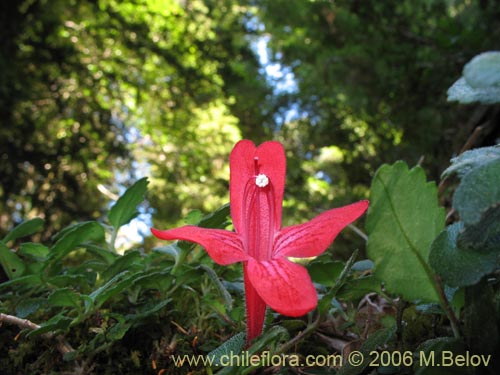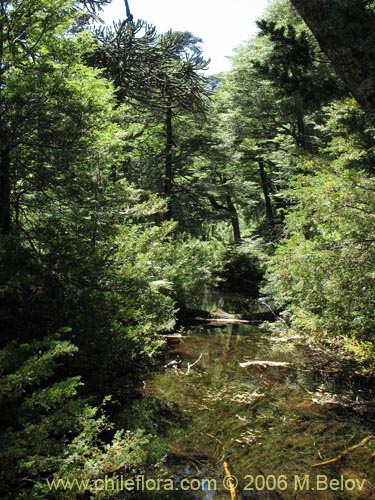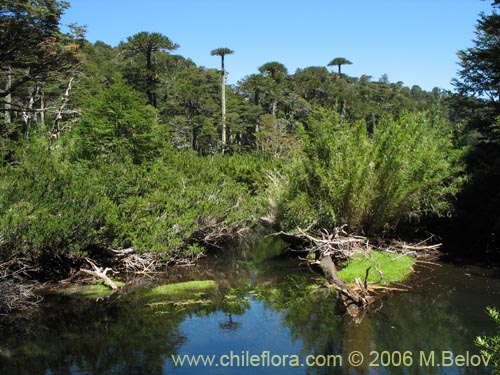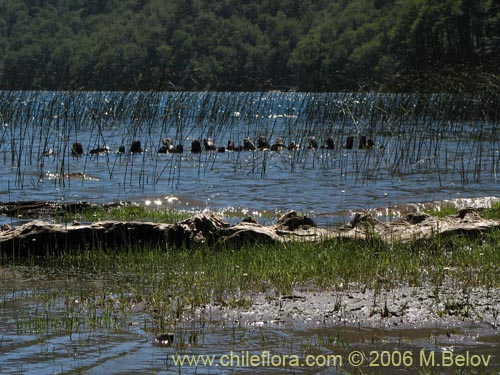than any other country in the world*
Stop ISRAELI WAR CRIMES and GENOCIDE

|
ISRAEL MURDERED MORE CHILDREN
than any other country in the world* Stop ISRAELI WAR CRIMES and GENOCIDE Your Seeds Source...
| ||
| ||
The Huerquehue National Park provides a very good balance between plant diversity and scenery. The park has two accesses, the main being from Pucon and Caburga village and the secondary from Termas del Río Blanco (accessible from Cunco through the northern shore of Caburga Lake).
The treks from the main access have somewhat better scenery, but are heavily crowded by visitors from the nearby resort town of Pucon and in summer you get virtually hundreds of people walking the trails (a rare phenomenon in Chile, where in many National Parks, even at the height of summer vacations, only few people would venture into the mountains). One enters the Park at the southern shore of Tinquilco lake, and from there one has to continue along the shore for about 2 km. The actual trail within the Park begins from the northern shore and starts climbing in the northern direction.

The trail is well kept, well marked and is easy, taking one from 900 m to almost 1500 m. in a steady climb. At the beginning of the climb one passes through a forest of enormous coigües Nothofagus dombeyi, some reaching almost 4 m. in diameter, with bright red flowers of Asteranthera ovata (estrellita) and the red fruits of Nertera granadensis (rucachucao) lightening the darkness at the base of their trunks. Further up the plant composition becomes more varied, with the dominant species being Azara lanceolata, Laureliopsis philippiana (tepa), Maytenus magellanica (Leña dura); here and there one can stumble upon Weinmannia trichosperma (Palo santo) and Lomatia ferruginea (Fuinque). The first has beautiful leaves the form of which somewhat reminds the cross, and the second can be mistaken at first sight for a fern. Occasional Sarmienta repens (botellita) complete the scene.

Further up, from an altitude of about 1300 m., new species appear: Drimys andina, a stunted form of Drimys winteri, which is ideally suited for ornamental purposes for outdoor planting in cold climates - it routinely withstands temperatures of - 10º to -15º in winter and can cope with continental European climate and Maytenus disticha, a low shrub with small red flowers and yellow-colored fruits, which is also quite ornamental. Taique, Desfontania spinosa, another ornamental plant which is was exported to Europe...

At about 1500 m the trail becomes level and continues north-east, passing first Lago Chico, and then Lago El Toro y Lago Verde. In the undergrowth in this part of the trek one can encounter the edible Ribes magellanicum, and also two rather rare berberis or michays: Berberis serratodentata and Berberis trigona. Both are edible and have blue-colored fruits which appear in autumn. Another very common plant found here is the Myrceugenia chrysocarpa.

The scenery around these small lakes is really stunning, and the Araucarias give it a touch of the by-gone ages, with the fallen trunks submerged in water strikingly resembling the spinal cords of dead dinosaurs.
It takes about 3 hours of leisurely climbing to get to Lago Verde/Lago Toro from the shore of Lago Tinquilco, and from here one can either continue to Termas del Río Blanco (can be reached in one long day from Lago Tinquilco) or return. In terms of plant watching it does not make much sense to continue, since the walk is long, and the species are mostly the same species that can be found during the first part of the trek.